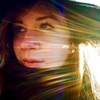In our Dancing vs. The State series, THUMP explores nightlife's complicated relationship to law enforcement, past and present.America and dancing don't really jive. In fact, the history of nightlife in the US is littered with rules and regulations attempting to curtail the activity. In the hyper-Christian America of the mid-1800s, publicly gyrating with a partner was forbidden in numerous cities and towns; and for much of the 20th century, it was illegal to dance with a member of the same-sex. Even today, regulations like the Cabaret law in New York—used at various points since the 1920s to target people of color and those from the LGBTQ community—still exist. Tracing the instances in which the law butted up against dancing, it becomes apparent that more often than not, enforcement of such legislation constituted a covert attempt to police sexuality and oppress marginalized communities.
Advertisement
In this history, THUMP runs through some of the most egregious examples of American lawmakers and institutions attempted to pull the plug on partying, and how these laws often reflected the morality and prejudices of the times.17th century Boston minister Increase Mather publishes An Arrow Against Profane and Promiscuous Dancing, an early publication on the evils of dancing. The text reflects the common Puritan belief that dancing is a sinful and promiscuous activity, one that increases the temptation to commit adultery.Private Texan Baptist school Baylor University opens its doors with a stringent ban on dancing on campus. Like many strict baptists at the time, the university's religious leaders consider dancing to be a sin. It will take 151 years for the school to repel the rule, but when university president Robert Sloan Jr finally lifts the ban in 1996, he warns students not to do anything "obscene or provocative."Minneapolis' public safety commission shuts down all of city's cabarets and 43 of its saloons, according to local paper the Day. At the time, a "cabaret" is defined as any entertainment establishment that holds performances—such as dances and musical events—before an audience that is seated at tables. Dancing on the part of the audience is prohibited, and it is illegal to sell alcohol to women. If a man buys a beer at a restaurant and shares it with his wife, he can get fined.During the Jazz Age, numerous states pass "blue laws"—regulations that restrict certain activities on Sundays, including the sale of alcohol, some of which are still in effect today. Atlanta, however, also passes a law preventing dancing on Sundays. "Dancing in any public place on the Lord's Day, commonly known as Sunday, is hereby prohibited," the law reads, as reported by the AP. These laws will be sporadically enforced throughout the 20th century, with an uptick in 1960s.Prohibition-era New York introduces a law in 1926 requiring any public venue that sells food or drink to obtain a Cabaret License in order for customers to dance there. The pretext behind the regulation is the need to tamp down on speakeasies, but the license is notoriously difficult and expensive to obtain. The legislation ends up throttling New York's already alcohol-barren nightlife scene, and is used to disproportionately target venues servicing communities of color. The rule, often known as "the Cabaret law"—or "no-dancing law"—is still in effect today, and has been enforced with varying degrees of intensity over the years.
1684
1845
1917
1925
1926
Increase Mather, a Boston minister who wrote one of the earliest publications on the evils of dancing. Photo courtesy of the New York Public Library.
Advertisement
1943
1953
1960s
1967
1983
1980
Advertisement
